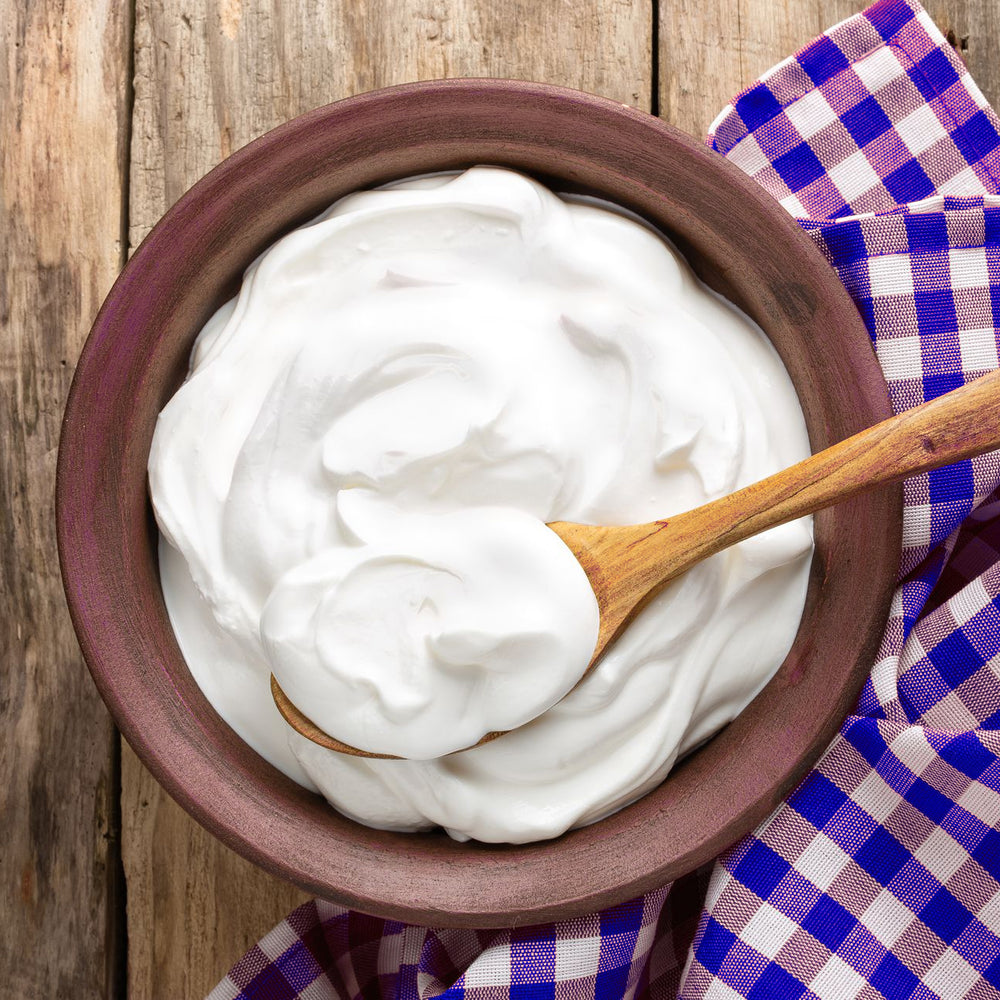
What is a Thermophilic yogurt?
When most people think of yogurt, they think of thermophilic yogurt. This is the generally the yogurt you will find in the store or supermarket.
Thermophilic yogurt basically means that the bacteria love and thrive off heat. They ferment in the heat range of about 105 to 115 degrees for about 5 hours (or more if desired). Unless you plan to ferment outside in the middle of summer in phoenix Arizona, you generally need some assistance to keep that high consistent heat. There are plenty of yogurt makers available or a simple crock pot can work great as well.
Thermophilic yogurts are usually made in a lab from selected strains that are know to taste good, have health benefits or work well together.
What is a Mesophilic yogurt?
Mesophilic yogurt is a yogurt that is fermented at room temperature (65-80 degrees) vs 115 degrees for thermophilic yogurt. That is why it is considered a ‘room temperature yogurt’. Examples are viili, filmjolk, matsoni, piima.
Making mesophilic yogurt is much easier making thermophilic yogurt. It requires no extra heating as it can simply sit in your cupboard and brew at room temperature. It takes around 12-24 hours to fully ferment a mesophilic yogurt.
Mesophilic yogurts are essentially derived from soured milk and thus in a natural state and not usually lab created.
Texture
Thermophilic yogurts have a texture that is usually quite thick and you can typically eat it with a spoon. There are thin yogurts, but they are more a novelty and not the norm.
Mesophilic yogurts tend to be thinner than thermophilic yogurts. The texture is usually somewhere between spoon-able and drinkable. Viili is the notable exception to this. Viili (the long version) has a unique texture that is very thick and ropey.
Flavor
Typically thermophilic yogurts have a fairly strong tart flavor in its natural form. There are variations in flavor as the strains and fermentation process can vary.
If you make homemade thermophilic, you can determine the level sourness. Short ferments make for a more mild flavor and long ferments will create a very sour yogurt.
Mesophilic yogurts will generally have a more mild flavor (even with a longer ferment). They have a tart flavor, but usually more subtle than what you find with the store bought thermophilic yogurts.
Mesophilic yogurts can have more unique flavors as well. Take filmjolk for example. It has a unique buttery flavor that people love.
Probiotics
Thermophilic yogurts generally have about 4-6 strains of bacteria picked by a lab or a so-called expert in the field. The problem with this that people don’t really understand how probiotics work yet. We are in the very early stages of understanding individual strain functions as well as the very complex interactions between strains is beyond immense. So basically, it’s a little bit of science and a lot of guess work. It likely has health benefits, but perhaps not as much as people would like or expect.
Mesophilic yogurts usually have around 5-10 strains with a couple dominate strains that give them their unique qualities.
For example, Viili can have around 7 strains - Lactococcus lactis ssp. cremoris, Lactococcus lactis subsp. lactis biovar. diacetylactis, Leuconostoc mesenteroides subsp. cremoris. Lactobacillus plantarum, Streptococcus thermophilus, Lactobacillus paracasei, Bacillus cereus and Lactobacillus delbrueckii.
Also due to room temperature ferment, the natural bacteria in the milk will thrive within the ferment. So overall, the will typically be a greater diversity of strains in a mesophilic yogurt.
Mesophilic yogurts are essentially derived from soured milk and thus in a natural state and not usually lab created. This creates a more natural, diverse balance than thermophilic yogurts. Basically, nature put the strains in place vs. someone in a lab.
Yeast
Mesophilic yogurt can have small amounts of yeast present. Its still heavily bacteria rich like any yogurt, but yeast can be present. The reason being is that room temperature fermentation can pick up airborne yeast and allow it to thrive in that temperature range. Small amounts of yeast is perfectly normal and healthy though and should not affect the overall quality of the yogurt.
In comparison, thermophilic yogurts ferment is such a hot ferment that yeast will generally not thrive at all. So even though they may pick up airborne yeasts or other microbes, they will generally not do well in the 105 to 115-degree range.
When comparing to milk kefir, mesophilic yogurt has significantly less yeast. Milk kefir is a rich symbiosis balance between bacteria and yeast. Mesophilic yogurt is mostly a bacteria ferment with a small amount of yeast.
Bottom Line
There are many differences between thermophilic yogurt (store bought) and mesophilic yogurt (room temperature yogurts).
Thermophilic yogurt
- Usually thick
- Strong tart / sour flavor
- Hard to make at home
- Lab made with pre-selected strains
- Very low yeast
Mesophilic yogurt
- Usually thin, except for Viili
- Mild unique flavors
- Easy to make at home
- Naturally selected strains
- Low yeast content
Final thoughts
For me, it comes down to this. If you enjoy sour thick yogurt, go with a thermophilic home made yogurt. If you enjoy mild, unique natural ferments that are easy to make at home, then go with a mesophilic yogurt.
Which do you prefer?


Leave a comment